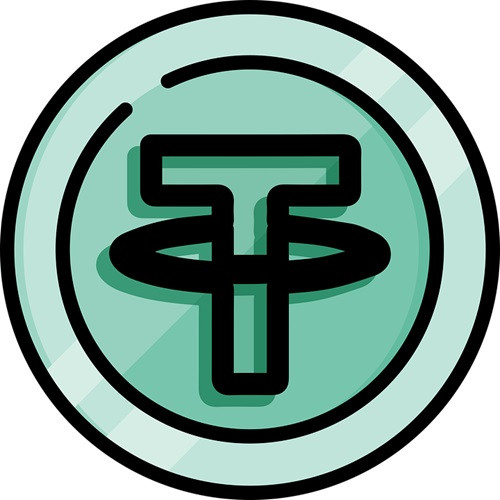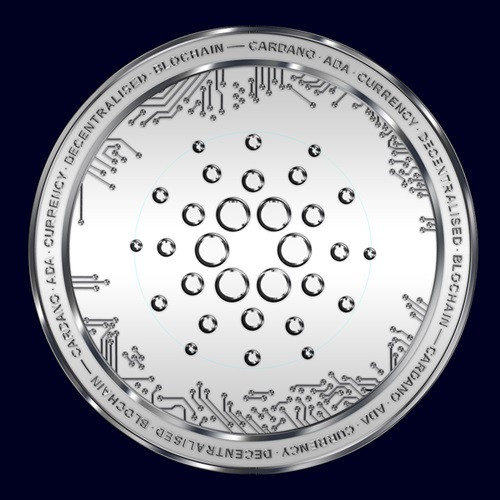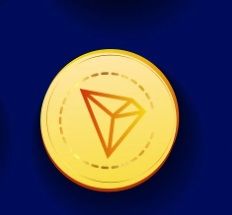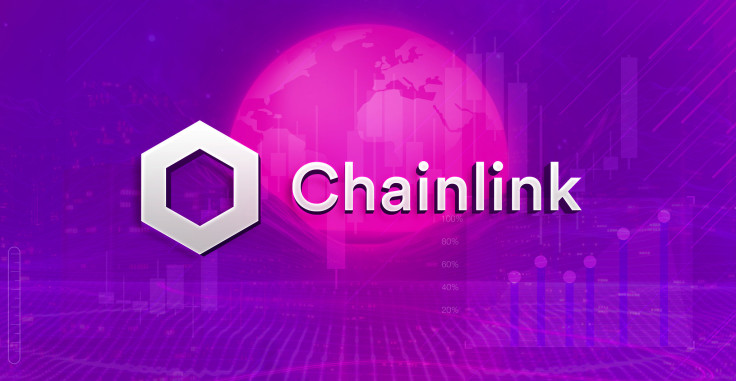20 Highest-Grossing Cryptocurrencies Of 2024: Chart-Toppers That Define The Market

In 2024, the world of cryptocurrencies continues to evolve and expand, with several digital assets emerging as frontrunners in terms of market capitalization and investor interest. As the crypto landscape remains dynamic, understanding the highest grossing cryptocurrencies of the year provides valuable insights into the trends shaping the industry. From established giants like Bitcoin and Ethereum to innovative newcomers, each cryptocurrency's unique features, use cases, and market dynamics contribute to its prominence in the ever-growing crypto market.
As the crypto ecosystem matures, regulatory frameworks are gradually taking shape, fostering greater institutional adoption and investor confidence. Nonetheless, ongoing advancements in blockchain technology, the emergence of new use cases, and evolving market dynamics ensure that the crypto landscape remains dynamic and ever-changing. To navigate this complex terrain successfully, stakeholders must remain informed, adaptable, and committed to fostering responsible innovation and sustainable growth within the cryptocurrency space.
Let's delve into the top-performing cryptocurrencies of 2024 and explore the factors driving their success.
Here's a guideline on how to choose a cryptocurrency:
Research and understand: Begin by researching and understanding the cryptocurrency market. Learn about different cryptocurrencies, their underlying technology, use cases, and market trends. Websites, forums, whitepapers, and reputable sources can provide valuable information.
Define your goals: Determine your investment goals and risk tolerance. Are you looking for long-term investment opportunities or short-term trading? Consider your financial situation and objectives before making any decisions.
Evaluate the technology: Assess the technology behind the cryptocurrency. Understand its blockchain protocol, consensus mechanism, scalability, security features, and any unique innovations or improvements it offers compared to other cryptocurrencies.
Examine the use case: Evaluate the practical application and utility of the cryptocurrency. Does it solve real-world problems or address specific market needs? Consider factors such as transaction speed, cost, decentralization, and adoption potential.
Check the team and community: Research the development team and community behind the cryptocurrency. Look for experienced developers, active community engagement, transparency, and ongoing project updates. A strong team and community can indicate credibility and long-term viability.
Review market dynamics: Analyze the cryptocurrency's market dynamics, including price history, trading volume, liquidity, market capitalization, and volatility. Consider how these factors may impact your investment strategy and risk exposure.
Assess regulatory environment: Understand the regulatory environment surrounding the cryptocurrency. Regulatory clarity and compliance can influence market sentiment, adoption, and legal risks associated with investing in certain cryptocurrencies.
Here are the highest-grossing cryptocurrencies of 2024
1. Bitcoin (BTC)

Price $52,129
Market Cap $1.02 trillion
At a price of $52,129 with a market cap of $1.02 trillion, Bitcoin remains the iconic figurehead of the cryptocurrency landscape. Its enduring influence is evident as it continues to be the go-to reference in discussions about digital currencies. Notably, in 2024, the SEC's approval of ETFs directly investing in Bitcoin provided investors with a straightforward avenue to engage in Bitcoin-related investment opportunities.
Bitcoin, the pioneering and widely embraced cryptocurrency, initiated the global frenzy around digital assets since its inception in 2009. Its meteoric rise has captivated investors, media, and businesses alike, establishing itself as an alternative payment method to traditional currency, safeguarded by the Proof of Work consensus mechanism and recorded on a blockchain ledger. Often regarded as a store of value, Bitcoin is commonly referred to as "digital gold" by many. As the foremost token, Bitcoin attracts substantial investment, offering relative stability compared to newer counterparts, yet its Proof of Work system demands significant energy consumption and processing time for transactions. As Bitcoin often serves as a barometer for the overall crypto market, it seldom strays from the prevailing market trends and conditions.
2. Ethereum (ETH)

Price:$2,958
Market cap: $355 billion
With a price of $2,958 and a market cap of $355 billion, Ethereum stands as the second most recognizable name in the cryptocurrency sphere, representing not just a currency but an entire platform. Utilizing ether as its currency, Ethereum facilitates various functions, with its smart contract feature notably contributing to its popularity and utility within the crypto community.
Launched in 2015, Ethereum swiftly ascended to become the second-largest cryptocurrency, distinguishing itself from Bitcoin by its unique purpose. Serving as a decentralized platform for a myriad of decentralized applications (DApps), Ethereum operates on smart contracts, enabling the creation of applications atop its blockchain. Utilizing a Proof of Stake consensus mechanism, Ethereum boasts efficiency, ensuring contracts execute as programmed without susceptibility to fraud or external interference. Nevertheless, Ethereum encounters challenges like network congestion, which can drastically slow down transactions, necessitating scaling solutions. Moreover, transaction costs on Ethereum can occasionally surge, surpassing the transaction value in some instances.
3. Tether (USDT)

Price: $1.00
Market cap: $98 billion
Tether (USDT), priced at $1.00 with a market cap of $98 billion, is classified as a stablecoin, maintaining its value at $1 per coin by being pegged to the U.S. Dollar. Serving as a bridge currency, Tether facilitates seamless transitions between different cryptocurrencies, eliminating the need to convert back to fiat currencies like the dollar. As the third-largest cryptocurrency and a leading stablecoin, Tether plays a crucial role in stabilizing the volatile crypto market. Investors often utilize Tether to mitigate losses during market fluctuations, thereby contributing to market stability and enabling strategic cryptocurrency investments.
4. Binance Coin (BNB)

Price: $355.86
Market cap: $53 billion
Priced at $355.86 with a market cap of $53 billion, BNB stands as the cryptocurrency affiliated with Binance, one of the world's largest crypto exchanges. Initially conceived as a token for discounted trades, Binance Coin has expanded its utility to include payments and purchases across various sectors since its inception in 2017.
Evolving beyond its original purpose, BNB now anchors the BNB Chain ecosystem, renowned for its rapid transactions and cost efficiency, positioning itself as a formidable competitor to Ethereum. While holding BNB offers advantages within the Binance exchange platform, it's important to note its centralized nature, managed by Binance itself, which limits community autonomy. The success of BNB is intricately linked to Binance's trajectory, subjecting it to regulatory scrutiny from countries like the UK, Japan, and Germany.
5. Solana (SOL)

Price: $108.68
Market cap: $48 billion
With a price of $108.68 and a market cap of $48 billion, Solana entered the cryptocurrency scene in March 2020, emphasizing its rapid transaction speed and the robustness of its "web-scale" platform. The currency, SOL, has a capped issuance of 480 million coins. Solana prioritizes scalability as a decentralized blockchain platform, boasting one of the market's fastest transaction speeds, reaching nearly 65,000 per second. This feat is achieved through its innovative Proof of History consensus mechanism, facilitating network-wide time synchronization among nodes.
Solana has emerged as a prominent player in the DeFi sector, attracting significant investor interest due to its exceptional speed and minimal transaction fees, averaging at $0.00025. However, interoperability with Ethereum is limited, restricting smart contract capabilities to those tailored for the Solana network. Despite its rapid growth, Solana has faced intermittent network outages, undermining its reliability for users.
6. XRP Ripple (XRP)

Price: $0.5675
Market cap: $31 billion
Priced at $0.5675 with a market cap of $31 billion, XRP, formerly known as Ripple and established in 2012, provides a versatile payment method across various real-world currencies. Designed for facilitating cross-border transactions, Ripple employs a trustless mechanism to streamline payments, primarily targeting banks and financial institutions. It addresses inefficiencies inherent in systems like SWIFT, offering rapid settlement times, completing transactions in seconds rather than hours or days, thus enhancing accessibility to traditional finance through blockchain technology.
Despite facing legal challenges from the US Securities and Exchange Commission, Ripple continues to pursue its mission of expanding banking access and international settlements by reducing entry barriers. However, its network remains highly centralized, with transactions confirmed by a federated group of financial entities.
7. U.S. Dollar Coin (USDC)

Price: $1.00
Market cap: $28 billion
Priced at $1.00 with a market cap of $28 billion, USD Coin (USDC) mirrors Tether as a stablecoin, maintaining a steady value tied to the US dollar. Developed by Circle and Coinbase, USDC is fully backed by a 1:1 reserve of US dollars, ensuring stability. Widely accessible on Coinbase, one of the leading cryptocurrency exchanges, USDC serves to stabilize other digital assets within the market. The founders of the currency assert that it is supported by fully reserved assets held in accounts with regulated US institutions, providing users with confidence in its stability and reliability.
8. Cardano (ADA)

Price: $0.6293
Market cap: $22.2 billion
Priced at $0.6293 with a market cap of $22.2 billion, Cardano (ADA) entered the cryptocurrency realm relatively late but quickly gained recognition for its early adoption of proof-of-stake validation. This approach accelerates transaction processing and minimizes energy consumption and environmental impact by eliminating the competitive, energy-intensive mining characteristic of platforms like Bitcoin.
Spearheaded by one of Ethereum's co-founders, Cardano incorporates smart contracts for identity management and decentralized applications, all powered by its native coin, ADA. Despite experiencing more modest growth compared to other major cryptocurrencies, ADA has seen a substantial increase in value since its inception, with its price rising from $0.02 in 2017 to $0.63 as of Feb. 20, 2024, marking a remarkable 3,036% surge. Designed to address scalability, interoperability, and sustainability concerns prevalent in other blockchain platforms, Cardano adopts a meticulous research-based approach to development, prioritizing resilience over rapid deployment.
9. Avalanche (AVAX)

Price: $38.74
Market cap: $14 billion
Priced at $38.74 with a market cap of $14 billion, Avalanche emerged in 2020 as a formidable contender to Ethereum in the realm of smart contract-enabled blockchains. Positioned as a versatile platform for deploying decentralized finance applications and enterprise blockchains, Avalanche prioritizes scalability, security, and interoperability. Employing a "proof-of-stake" consensus model, users can earn rewards by staking their tokens on the network. AVAX serves as the native currency of the Avalanche blockchain, facilitating transactions and ecosystem participation. Notably, Avalanche offers subnets, acting as child chains of the Avalanche C-Chain, enabling seamless deployment of dedicated blockchains for various use cases. This versatility has attracted numerous gaming projects to Avalanche, solidifying its reputation as a leading technology for gaming within the web3 space, exemplified by the success of DeFi Kingdoms, one of the largest gaming projects launched on the platform.
10. Dogecoin (DOGE)

Price: $0.08667
Market cap: $12 billion
Initially conceived as a humorous response to Bitcoin's surge, Dogecoin derives its name from an internet meme featuring a Shiba Inu dog. Despite its origins as a joke, Dogecoin swiftly gained popularity, captivating a dedicated and vibrant community. Endorsed by various figures in the cryptocurrency realm and notable personalities like Elon Musk and Vitalik Buterin, Dogecoin has garnered significant attention. It's essential to recognize that Dogecoin is categorized as a memecoin and lacks intrinsic value beyond its strong community support. Unlike many digital currencies with finite supplies, Dogecoin boasts unlimited issuance and can be utilized for transactions or remittances.
11. Tron (TRX)

Price: $0.1378
Market cap: $12 billion
Launched in September 2017 by Justin Sun, Tron is a blockchain ecosystem focused on decentralizing the internet through blockchain technology and decentralized apps. Tron hosts the largest circulating supply of stablecoins globally and aims to enhance blockchain scalability and availability while offering Ethereum Virtual Machine (EVM) compatibility for seamless application portability. Despite its initiatives like TRON Arcade and "Project Atlas" to decentralize the internet, Tron faces challenges with fewer developers compared to competitors like Ethereum, which remains dominant in the dApp space.
12. Chainlink (LINK)

Price: $19.31
Market cap: $11 billion
Priced at $19.31 with a market cap of $11 billion, Chainlink emerged in 2017, enabling blockchain-based contracts to interface with external data feeds. Operating as a blockchain abstraction layer hosted on the Ethereum platform, its pivotal role lies in facilitating secure interactions between smart contracts and external data sources, APIs, and payment systems, garnering widespread adoption across major protocols. Notable for its robust security and transparency, Chainlink incentivizes multiple independent nodes to uphold data quality and reputation through its LINK token. The LINK token experienced significant growth in 2023, and its role in web3 infrastructure positions it for continued impact amidst anticipated market growth in 2024, driving heightened demand for its services.
13. Polkadot (DOT)

Price: $7.42
Market cap: $9.5 billion
Polkadot (DOT) is a cryptocurrency and blockchain platform that aims to enable interoperability between different blockchains. Founded by Gavin Wood, one of the co-founders of Ethereum, Polkadot seeks to address scalability, security, and governance issues inherent in existing blockchain networks. It achieves this by facilitating the seamless transfer of data and assets between different blockchains, known as parachains, within its ecosystem. Polkadot's unique architecture and consensus mechanism, called Nominated Proof-of-Stake (NPoS), allow for greater scalability, security, and flexibility, making it an innovative solution for building decentralized applications and connecting disparate blockchain networks.
14. Polygon (MATIC)

Price: $ 0.9866
Market cap: $ 9.49billion
Priced at $0.9866 with a market cap of $9.49 billion USD, Polygon offers a scalable and interoperable infrastructure tailored for decentralized applications (dApps). Positioned as a "layer two" solution to the Ethereum network, Polygon enables developers to create and launch Ethereum-compatible dApps on its platform. The low-cost structure of Polygon has led to widespread adoption by numerous projects. Although Polygon's business model is theoretically replicable, its successful establishment of a strong network effect has fostered consistent growth.
15. Shiba Inu (SHIB)

Price: $ 0.00001
Market cap: $5.67 billion
Priced at $0.00001 with a market cap of $5.67 billion, Shiba Inu emerged in 2021 as a "joke coin" inspired by the Dogecoin meme featuring a Shiba Inu dog. Unlike Dogecoin, which boasts a market cap of $1 billion, Shiba Inu's market cap has surged to $5 billion. This discrepancy arises from Shiba Inu's creation on the Ethereum blockchain, enabling "token cloning." Consequently, numerous versions of Shiba Inu have proliferated, surpassing 100 variations of the coin.
16. Dai (DAI)
⚠️Maker Protocol Changes ⚠️
— Maker DAI Bot (@MakerDaiBot) May 17, 2023
WBTC-C debt ceiling: 53.544M → 43.526M DAIhttps://t.co/bX2ZQO1k1L
Price: $ 1
Market cap: $5.35 billion
Priced at $1.000247 with a market cap of $5.35 billion, Dai is a stablecoin pegged to the US dollar and created by MakerDAO, a decentralized autonomous organization (DAO) operating on the Ethereum blockchain. What sets Dai apart is its utilization of a system called "collateralized debt positions," where it is backed by other assets like ETH or BAT. This unique feature ensures Dai's stability, as it is not prone to the same volatility as other cryptocurrencies.
17. Litecoin (LTC)

Price: $69.91
Market cap of $ 5.19 billion
Priced at $69.91 with a market cap of $5.19 billion USD, Litecoin is a decentralized peer-to-peer cryptocurrency and open-source software project. Launched in October 2011, Litecoin draws inspiration from Bitcoin and is one of the earliest altcoins. It boasts unique features such as faster transaction times and improved storage efficiency compared to Bitcoin. Litecoin also serves as a "testnet" for Bitcoin, allowing developers to trial new features on Litecoin before implementing them on Bitcoin. With a sizable community of supporters, Litecoin is often regarded as the "silver to Bitcoin's gold" due to its foundational similarities to Bitcoin.
18. Cosmos (ATOM)

Price: $9.82
Market cap: $3.8 billion
Dubbed the "internet of blockchains," Cosmos endeavors to establish a network of interconnected chains to enhance performance and expand developer possibilities. Unlike relying solely on one blockchain's infrastructure, Cosmos empowers developers to launch autonomous blockchains for their decentralized applications (dApps). This approach grants them access to shared network security and scalability while tailoring the blockchain and its tokenomics to maximize efficiency. The interconnection of blockchains enhances network interoperability and performance, enabling users to interact with assets beyond the Cosmos ecosystem, such as Ethereum and Bitcoin. Developers reap significant benefits from the autonomy afforded by sovereign blockchains. A notable portion of traffic within Cosmos, however, tends to concentrate in a select few zones rather than being evenly distributed across the network.
19. THORChain (RUNE)
🎆 @THORChain has hit a new milestone!
— THOR InfoBot (@THOR_InfoBot) February 25, 2024
Total borrowed is now over $10M ($12,824,256)!
Previous milestone was $5M (2 months 16 days ago) pic.twitter.com/Q4VKU4XGKZ
Price: $ 5.448557
Market cap: $ 1.86 billion
Priced at $5.448557 with a market cap of $1.86 billion, Thorchain addresses a significant challenge in decentralized finance: enabling trustless asset trading between independent blockchains. While the project's vision holds great promise, achieving its goals will require substantial effort and time. Nonetheless, if successful, Thorchain has the potential to revolutionize a substantial portion of the web3 landscape.
20. Maker (MKR)
🟢🟢
— MakerDao Live (@MakerDaoNews) February 26, 2024
The current price of one $MKR coin is: $2067.62, +0.16897% change in the last hour, +1.82327% change in the last 24 hours.
24H Volume: $59,726,688.
Market Cap: $1,903,249,273.#MKR #MakerDao
Price: $2,009.80
Market cap: $1.85 billion
Priced at $2,009.80 with a market cap of $1.85 billion, Maker operates as a decentralized protocol responsible for the management of DAI, a stablecoin pegged to the US Dollar through crypto collateralization. MakerDAO, a decentralized autonomous organization, governs the protocol, offering users the opportunity to vote on pivotal matters. MKR serves as the governance token of the platform, granting holders the ability to engage in decision-making processes. Among the advantages of Maker is its decentralized nature, empowering users to shape its trajectory, and DAI's widespread acceptance across numerous DeFi protocols.
Navigating digital assets
The cryptocurrency landscape is evolving rapidly, offering opportunities and challenges for investors, developers, and regulators alike. The proliferation of diverse digital assets, blockchain technologies, and decentralized applications has brought unprecedented innovation and disruption across various industries. However, this dynamic environment also presents risks, such as regulatory uncertainty, market volatility, and security vulnerabilities. To navigate this complex terrain successfully, stakeholders must remain informed, adaptable, and proactive in addressing emerging issues and opportunities within the cryptocurrency space.
© Copyright IBTimes 2024. All rights reserved.


















